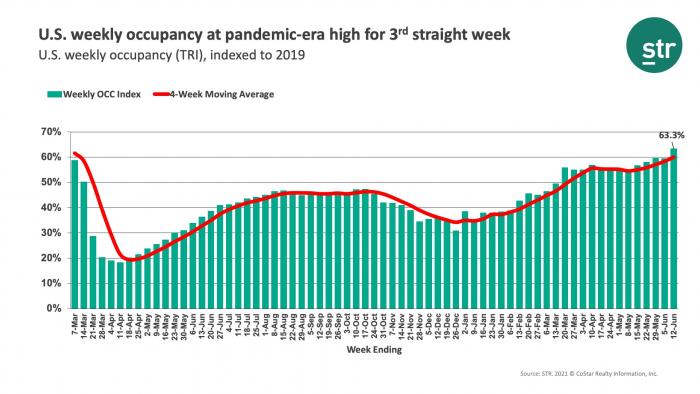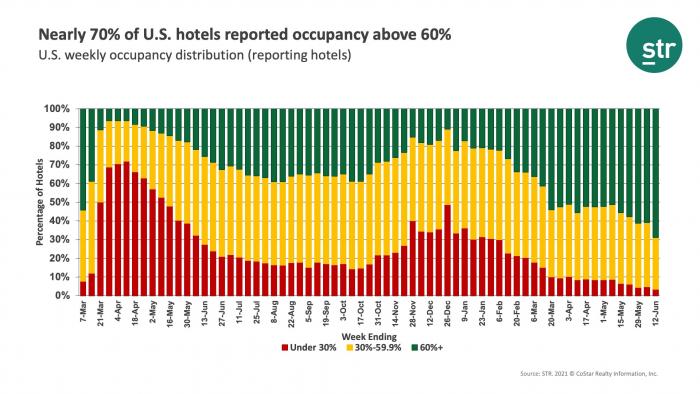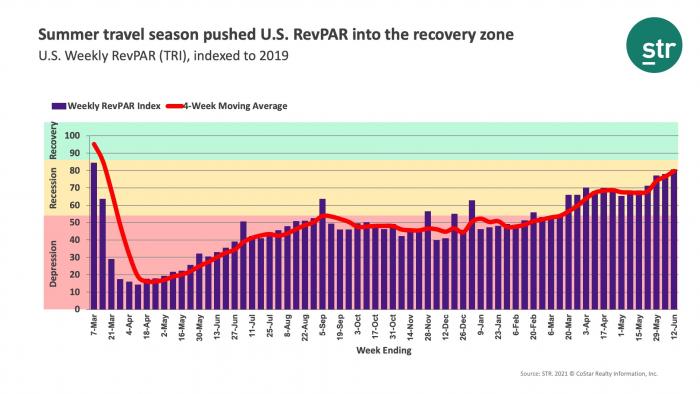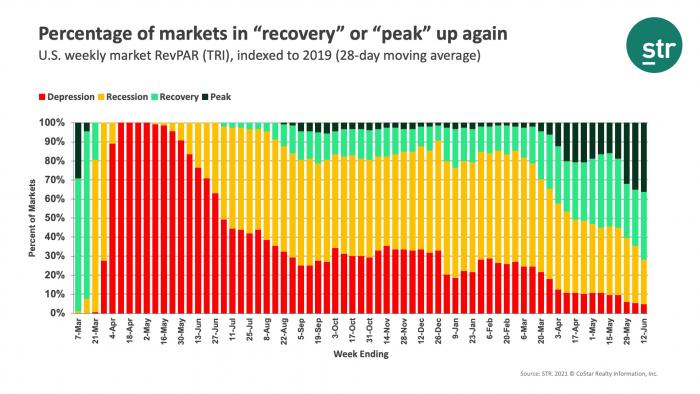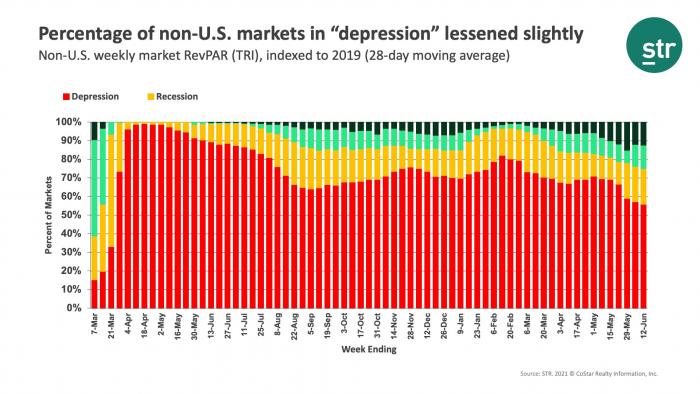Are you tracking the Market Recovery Monitor each week? Utilizing data and benchmarking to navigate recovery will be a key focus of the 2021 Hotel Data Conference. Click here for registration, with both in-person and virtual options available for our 13th annual event in Nashville.
Previous MRM versions: 29 May | 5 June
Week ending 12 June
U.S. hotel industry occupancy soared to its highest level since November 2019, reaching 66.0% for the week ending 12 June 2021. Room demand surpassed 25 million in the week, up 1.6 million week on week, and was 91% of the level recorded in the comparable week from 2019. This is significant given the fact that business travel and group demand remain curtailed. Occupancy on Saturday reached 81%, a level like the Saturday of this year’s Memorial Day weekend, while the full weekend came in at 78.8%, the highest since fall 2019 and higher than the comparable weekend of 2019. Additionally, occupancy was above 62% for each day, except Sunday and Monday. On a total-room-inventory basis (TRI), which accounts for temporarily closed hotels, weekly occupancy was 63%, the highest since the start of the pandemic. TRI occupancy for the weekend was 75%, also a pandemic-era high.
